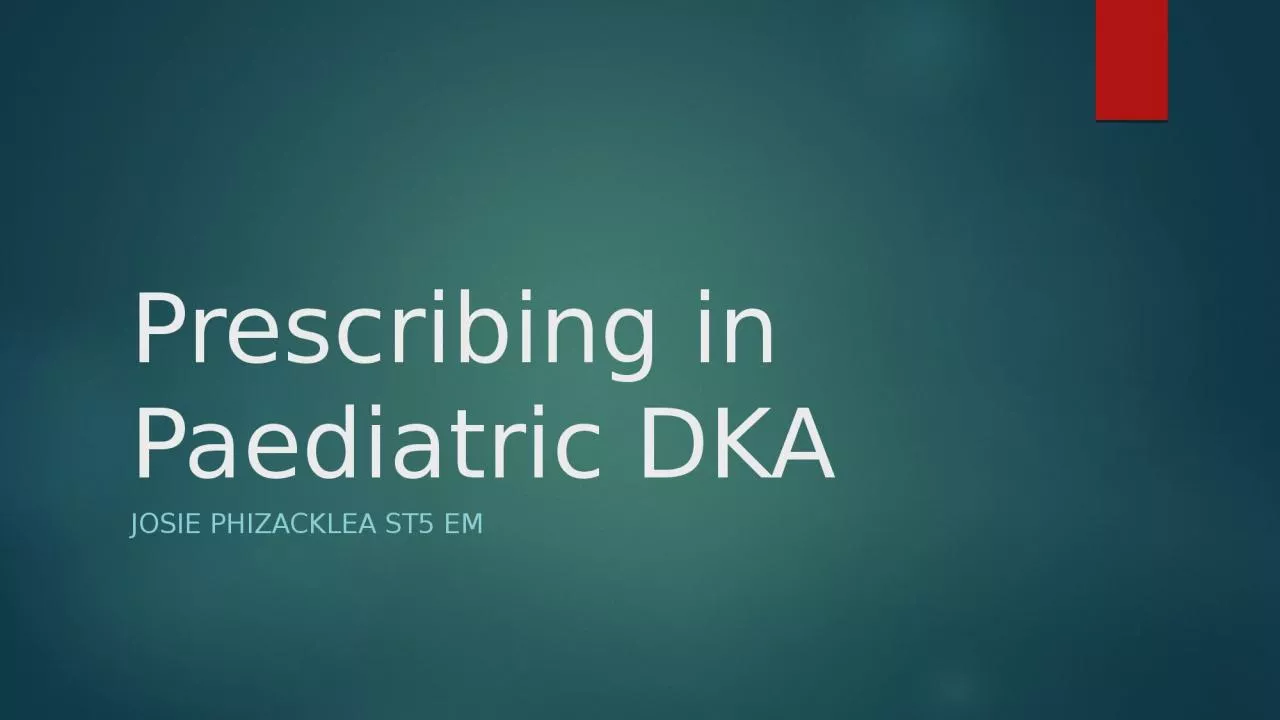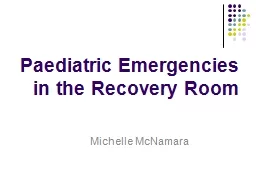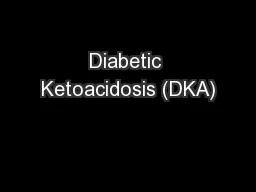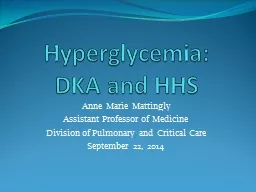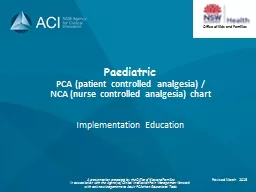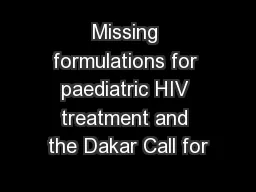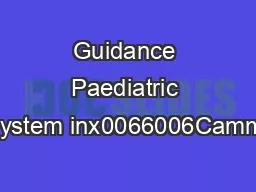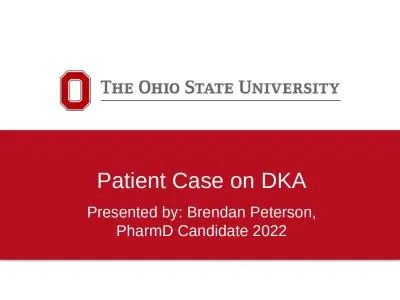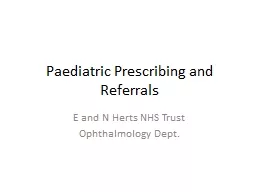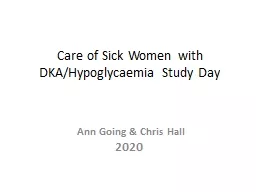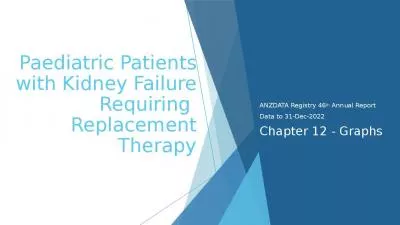PPT-Prescribing in Paediatric DKA
Author : alyssa | Published Date : 2024-02-03
Josie Phizacklea st5 em CASE 1 6yr child 20kg RR 35 other obs normal GCS 15 pH 715 Glucose 18 Ketones 4 HCO3 14 K 3 CASE 1 6yr child 20kg Assessed as moderate
Presentation Embed Code
Download Presentation
Download Presentation The PPT/PDF document "Prescribing in Paediatric DKA" is the property of its rightful owner. Permission is granted to download and print the materials on this website for personal, non-commercial use only, and to display it on your personal computer provided you do not modify the materials and that you retain all copyright notices contained in the materials. By downloading content from our website, you accept the terms of this agreement.
Prescribing in Paediatric DKA: Transcript
Josie Phizacklea st5 em CASE 1 6yr child 20kg RR 35 other obs normal GCS 15 pH 715 Glucose 18 Ketones 4 HCO3 14 K 3 CASE 1 6yr child 20kg Assessed as moderate DKA with pH 715 with 5 dehydration. Aylin. Seven. CAUSES OF RESPIRATORY FAILURE. Upper – croup/epiglottis. Lower – bronchiolitis. Lung – pneumonia/ARDS, pulmonary . oedema. Status . Epilepticus. Apnoea. of prematurity. Intoxication. in the Recovery Room. Michelle McNamara. Proposed Learning. Paediatric Emergencies . . A.B.C.D.E. A. irway. B. reathing. C. irculation. D. isability (depressed consciousness, unresponsiveness).. E. DEEP. multinational and multicultural experience. Adriana . Ceci. DEEP . Scientific Coordinator, . and . member of PDCO-EMA. 16 Partners . 18 recruiting centres from 7 Countries:. EU: Cyprus, Greece, . Endocrine Block. - . Diabetic Complications. - . Ketone bodies metabolism. - DKA. :. Definition . Causes and Mechanisms. Manifestations. Precipitating Factors. - Hyperosmolar . hyperglycaemic. state (HHS) = . Anne Marie Mattingly. Assistant Professor of Medicine. Division of Pulmonary and Critical Care. September 22, 2014. Goals of Treatment. Accurately diagnose DKA and/or HHS. Provide optimal volume resuscitation. NCA (nurse controlled analgesia) chart. Implementation Education. A presentation prepared by the Office of Kids and Families . in association with the Agency of Clinical Innovation Pain Management Network . Action. Improving Access to Optimized Treatment . for Children . Living with HIV. Melbourne, 22 July 2014. Marc Lallemant & Janice Lee. DNDi. mlallemant@dndi.org. Malaria. Leishmaniasis. 1syndrome temporally associated with COVID-19Most children are asymptomatic or exhibit mild symptoms from COVID-19 infection Howeverin the last two months a small number of children have been identix0 Objectives. Introduce a patient case on diabetic ketoacidosis (DKA). Discuss the clinical presentation of DKA. Review the differences between DKA and HHS. Guidelines for DKA treatment and best practices. E and N Herts NHS Trust. Ophthalmology Dept.. To prescribe or not to prescribe? Guidelines for spectacle prescribing in infants and children. Susan Leat (2011). This paper discusses considerations for spectacle prescribing in infants and children, with reference to current literature.. . Ann Going & Chris Hall. 2020. Ketones. DKA IS A DANGEROUS AND POTENTIALLY LIFE THREATENING CONDITION WITH EARLY APPROPRIATE MEDICAL INTERVENTION ESSENTIAL.. What are . Ketones. Metabolism of fats can provide the body with energy when glucose is not available to the cells. Paediatric emergency medicine . spr. Learning outcomes. Be able to diagnose DKA. Start appropriate management. Discuss recent research / updates. Prescribing session. introduction. incidence of DM . 25 per 100 000 . Enp. teaching. 22/12/21. Zoe . smeed. Aims/objectives. EXAMINATION TIPS. Critol. Xr. interpretation. Common presentations - #, DISLOCATIONS, PULLED ELBOW. PAEDS TIPS. EXAMINATION. Look – feel - move. Replacement Therapy. ANZDATA Registry 46. th. Annual Report. Data to 31-Dec-2022. Chapter 12 - Graphs. Figure 12.1.1 Incidence of KRT - Age 0-17 Years - Australia. Figure 12.1.2 Incidence of KRT - Age 0-17 Years - New Zealand.
Download Document
Here is the link to download the presentation.
"Prescribing in Paediatric DKA"The content belongs to its owner. You may download and print it for personal use, without modification, and keep all copyright notices. By downloading, you agree to these terms.
Related Documents

